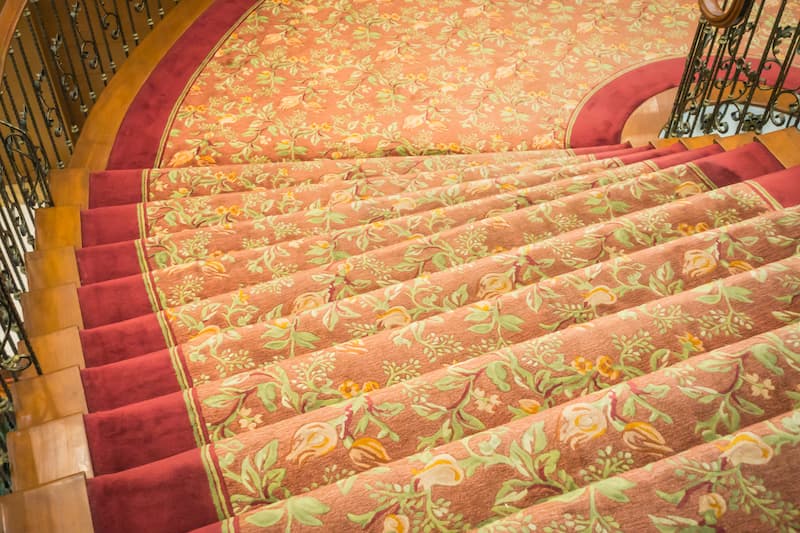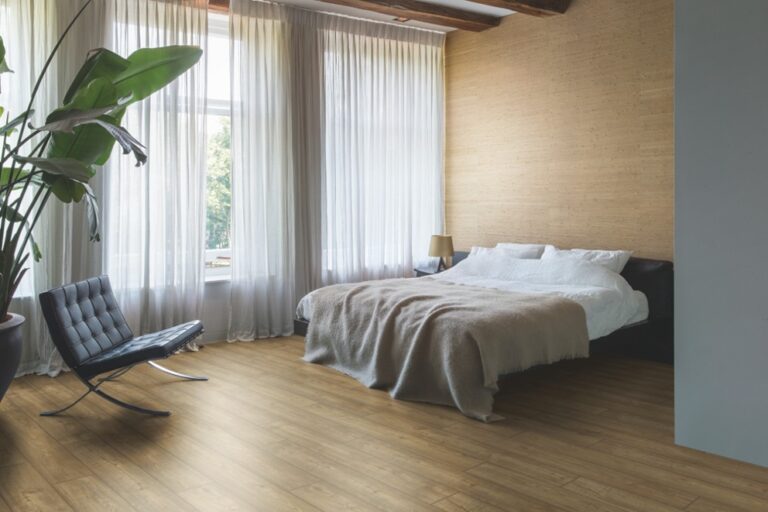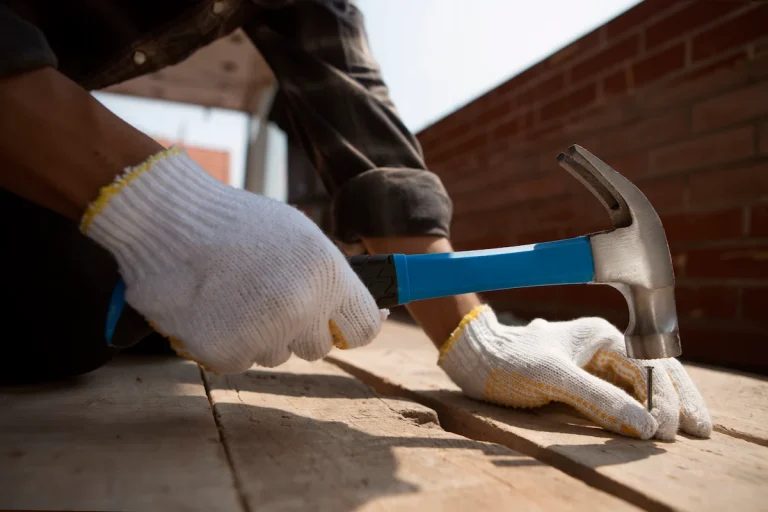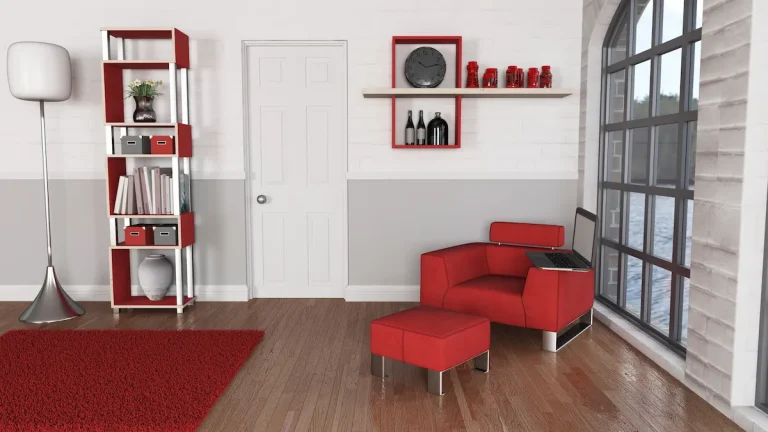Are you contemplating the installation of carpet on your stairs but uncertain about how much carpet for 12 to 15 step stairs? This guide outlines the fundamental factors to consider when measuring carpet for stairs, including various measurement methods and specific requirements for stairs consisting of 12 to 15 steps.
It also addresses the average costs associated with carpeting stairs and presents a DIY approach to potentially reduce expenses. Furthermore, this guide highlights the advantages of carpeting your stairs, ranging from improved safety to enhanced aesthetic appeal for your residential home. Explore this resource to obtain the information about how much carpet for 12 to 15 step stairs.
The Different Methods of Carpet Size Measurement
There are several methods available for measuring stairs, encompassing traditional techniques that utilise measuring tapes and modern approaches that employ online size converters for precise imperial or metric measurements. Each method presents distinct advantages, making it crucial to select the one that aligns best with your specific requirements.
- Measuring Tape: This time-tested tool remains a dependable choice, allowing for accurate length measurements. To measure stairs effectively, one should use it to capture the height and depth of each step, facilitating precise calculations for the overall staircase.
- Online Size Converters: With a few simple clicks, these tools offer instant conversions between imperial and metric systems, ensuring that accurate dimensions are obtained regardless of the units being utilised.
- Calculator Applications: Many applications now include built-in calculators specifically designed for stair measurements, allowing users to input their measurements and receive immediate feedback on the total rise, run, and angle.
Regardless of whether one chooses traditional or modern techniques, understanding how to measure stairs effectively can enhance renovations or construction projects, ensuring a safe and aesthetically pleasing outcome.
How Much Carpet for 12 to 15 Step Stairs
To determine how much carpet you need for a staircase with 12 to 15 steps, measure the depth and height of each step. Below are key factors to consider:
How Much Carpet for 12 Step Stairs?
How much carpet do I need to cover 12 steps? To determine the amount of carpet required for 12 steps, it is necessary to calculate the total area based on the dimensions of each step, which include both the tread and the riser. Additionally, one must account for any required carpet underlay.
When calculating the total square metreage needed for carpeting, it is imperative to consider the dimensions of both the tread and the riser. The tread refers to the horizontal surface upon which an individual steps, while the riser is the vertical component that connects one step to the next. For example, if the average tread length is 25 cm and the riser height is 18 cm, the area of each step can be calculated using the following formula:
- Tread depth (0.25 m) x Riser height (0.18 m) = Area of one step (0.045 m²).
- For 12 steps: 12 steps x 0.045 m² = 0.54 m².
Incorporating a carpet underlay, which typically necessitates approximately 10% additional material, results in the following calculation:
- Total area with underlay: 0.54 m² x 1.10 = 0.594 m².
Therefore, one would need to purchase a minimum of 0.594 square metres of carpet to adequately cover the steps.
How Much Carpet for 13 Step Stairs?
How much carpet do you need for 13 stairs? When carpeting a 13-step staircase, it is essential to measure accurately to ensure full coverage and minimise waste. Below is a step-by-step guide to calculating the required carpet dimensions.
1. Measure Each Step
To determine the total carpet length, measure the following:
- Tread depth (horizontal surface): Typically 9 to 12 inches (23–30 cm)
- Riser height (vertical section): Typically 7 to 8 inches (18–20 cm)
- Stair width: Standard width is 3 feet (91 cm) but may vary.
2. Calculate the Total Carpet Length
Each step consists of both the tread and the riser. Using an average of 10 inches (25 cm) for the tread and 8 inches (20 cm) for the riser, the total per step is approximately:
- 18 inches (45 cm) per step or 1.5 feet (0.45 m)
For 13 steps, the total length required is:
- 1.5 feet × 13 = 19.5 feet (5.85 metres)
If the staircase width is 3 feet (91 cm), the total carpet area required is:
- 3 feet × 19.5 feet = 58.5 square feet (5.44 square metres)
3. Allow for Extra Material
To accommodate cutting, pattern matching, and installation adjustments, it is advisable to add 5–10% extra to the total measurement.
- Final estimate: Approximately 65 square feet (6 square metres) of carpet.
How Much Carpet for 14 Step Stairs?
When carpeting a 14-step staircase, precise measurement is essential to ensure complete coverage and minimise waste. Below is a step-by-step guide to determining the required carpet dimensions.
1. Measure Each Step
To calculate the total carpet needed, measure the following:
- Tread depth (horizontal surface): Typically 9 to 12 inches (23–30 cm)
- Riser height (vertical section): Typically 7 to 8 inches (18–20 cm)
- Stair width: Standard width is 3 feet (91 cm), though this may vary.
2. Calculate the Total Carpet Length
Each step consists of both the tread and the riser. Assuming an average of 10 inches (25 cm) for the tread and 8 inches (20 cm) for the riser, the total per step is approximately:
- 18 inches (45 cm) per step or 1.5 feet (0.45 m)
For 14 steps, the total carpet length required is:
- 1.5 feet × 14 = 21 feet (6.4 metres)
If the staircase width is 3 feet (91 cm), the total carpet area required is:
- 3 feet × 21 feet = 63 square feet (5.85 square metres)
3. Allow for Extra Material
To ensure proper fitting, pattern alignment, and installation adjustments, it is advisable to add 5–10% extra to the total measurement.
- Final estimate: Approximately 70 square feet (6.5 square metres) of carpet.
How Much Carpet for 15 Step Stairs?
Carpeting a 15-step staircase with a landing or additional features requires careful measurement to ensure proper coverage and minimise material waste. Below is a step-by-step guide to determining the carpet required.
1. Measure Each Step
For standard straight stairs, measure the following:
- Tread depth (horizontal surface): Typically 9 to 12 inches (23–30 cm)
- Riser height (vertical section): Typically 7 to 8 inches (18–20 cm)
- Stair width: Commonly 3 feet (91 cm), but can vary.
Each step generally requires:
- Tread (10 inches) + Riser (8 inches) = 18 inches (45 cm) per step
For 15 steps, the total required length is:
- 1.5 feet × 15 = 22.5 feet (6.85 metres)
If the staircase width is 3 feet (91 cm), the base carpet area is:
- 3 feet × 22.5 feet = 67.5 square feet (6.27 square metres)
2. Accounting for a Landing
If your staircase includes a landing, measure its dimensions separately:
- Small landing (e.g., 3 feet × 3 feet) = 9 square feet (0.84 square metres)
- Larger or L-shaped landings may require additional carpet sections.
3. Considering Additional Stair Features
- Pie-shaped or winding steps will require extra carpet for proper coverage.
- Bullnose or rounded stair edges may need additional material to wrap around the curves.
- Patterned carpet requires extra length to match the design across steps and landings.
4. Final Carpet Estimate
- Base stair estimate: 67.5 sq. ft. (6.27 sq. m.)
- Small landing: +9 sq. ft. (0.84 sq. m.)
- Extra allowance (cutting, pattern matching): +10%
- Final estimate: ~85 square feet (7.9 square metres) of carpet.
By adhering to these detailed steps, ensuring precise measurements, and adequately preparing for the installation, the outcome will not only enhance the staircase’s aesthetic appeal but also ensure long-lasting durability.
What Is the Average Cost of Carpeting Stairs in Metres Squared?
The average cost of carpeting stairs can vary considerably depending on the type of carpet selected, the total area that needs to be covered, and any additional materials, such as underlay, that are necessary for proper installation.
What Are the Factors That Affect the Cost?
Several factors influence the cost of carpeting stairs, including the type of carpet selected, the necessary underlay, and the precision of measurements, which can impact the overall area calculation in metres squared.
Along with these fundamental elements, the quality of the carpet is a significant factor in determining total expenses. Higher-grade options generally offer enhanced durability and a more luxurious feel, leading to increased costs.
Certain carpet types, such as those made from nylon or wool, tend to be more expensive than synthetic alternatives, which are often more budget-friendly.
The choice of underlay also affects pricing; a thicker underlay not only enhances comfort but may also increase labour costs, as installation can require additional effort. Labour costs can vary based on the complexity of the installation process, the necessity for precise cutting, and alignment with stair edges, underscoring the importance of accuracy to avoid unexpected surcharges.
Can You Save Money by Carpeting Your Stairs Yourself?
Many homeowners contemplate whether they can achieve cost savings by undertaking a DIY approach to carpeting their stairs, which can indeed reduce expenses associated with professional installation. Embarking on this project necessitates careful consideration and planning to ensure successful execution.
When deciding to personally install carpeting on stairs, it is essential to evaluate both the advantages and disadvantages of such an endeavour.
Pros: DIY projects can be budget-friendly, as significant savings on labour costs can be realised. Additionally, homeowners experience a sense of pride and accomplishment from completing the task independently.
Cons: Conversely, insufficient experience may result in mistakes, leading to wasted materials and potential complications in the future. The unique structure of stairs can complicate the installation process, necessitating specialised techniques.
To effectively navigate these challenges, it is advisable to:
- Measure accurately to prevent unnecessary waste.
- Select a carpet type that offers durability suitable for high-traffic areas.
- Adhere closely to installation guides or consult tutorial videos online.
While a DIY carpeting project can be a fulfilling experience, understanding potential pitfalls and employing appropriate strategies are crucial for achieving a polished outcome.
Calculating how much carpet for 12 to 15 step stairs ensures a perfect fit and a professional finish. By measuring each step accurately and accounting for extra material, you can avoid costly mistakes.
For a hassle-free installation and a flawless look, trust the experts at TEKA Flooring. Our professional fitting service guarantees precision and durability, saving you time and effort. Contact TEKA Flooring today to get the perfect carpet installation for your stairs!
Read also:

































